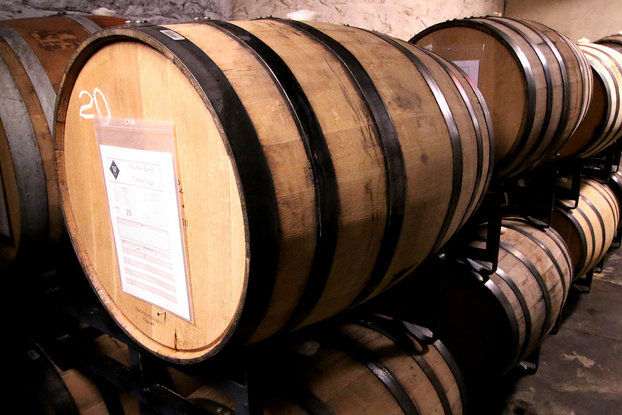
If you sought out barrel-aged beer 10 years ago, your options were usually limited. You could commonly find an imperial stout or barleywine aged in bourbon barrels, but much beyond that was rare. Today, as the demand for barrel-aged beer grows nearly as fast as the craft beer movement itself, a variety of beer styles aged in increasingly exotic barrel types are quickly capturing the attention of beer enthusiasts. Now we’re seeing everything from IPAs and wheat beers to Belgians and pumpkin ales all aged in a bevy of unique spirituous oak.
However, the cost associated with barrel aging still makes experimenting risky. Exotic barrels are expensive, and if the beer style you chose doesn’t mesh with the barrel you used, that’s time and money down the drain. Here’s a great feature on how to insure your barrel aging program to reduce some of this risk.
Even so, I can’t resist the thrill of taking chances.
Experimenting with barrels

At Wolf’s Ridge Brewing, we’ve decided to embrace it wholeheartedly. We still lean in to the tried-and-true pairs, of course. Imperial stout aged in bourbon barrels? Sure thing. It’s popular and the barrels are cheap (relatively speaking), but over the last two years we’ve begun to explore more and take more chances.
We’ve aged Belgian tripels and quads in gin barrels, pumpkins in local bourbon barrels and have sours conditioning in pinot noir barrels. Even our standard imperial stout gets a chance to branch out with our first Exotic Origins series release of Dire Wolf, featuring the beer aged in rum, port and sherry barrels this January. Each barrel tells a different story from the outside in.
Experimenting can be tricky, but overall, I’ve learned that every spirit can make a very unique contribution to a beer if given the right amount of time and care. If you try to pick a beer that will be complemented by the wood, you’ll go much further. That’s why I chose to put Belgian styles in the local gin barrels we used — the botanicals in the gin paired beautifully with the esters of the yeast. I hardly think Gin Barrel Stout would have been as successful.
To get a clear picture of how each barrel type imparted flavor into the final brew, I chose one type of beer, our imperial stout, and aged it in a variety of barrels. Below are a few of the barrels we’ve tried and my thoughts on each.
Caribbean rum barrels
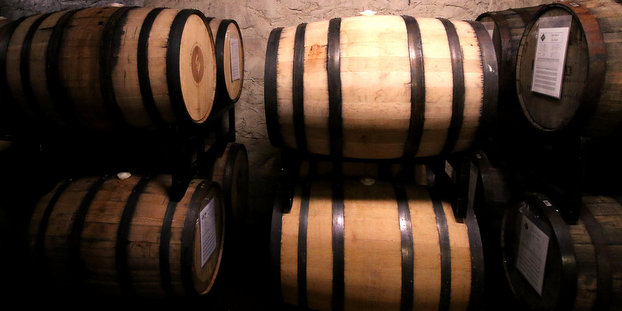
Our Caribbean rum barrels began their lives as Old Forrester Bourbon, then aged rum in the Caribbean long enough to look like they now belong on a pirate ship. They’re dark, weathered and voted most likely to leak out of any style barrel in my cellar. The flavor imparted is complex and perfect for beer. For me, rum lacks the harsh booziness that bourbon can often impart. The flavor contributions range from coconut and oak, to dark chocolate, perfectly complements to our imperial stout, Dire Wolf.
Port wine barrels
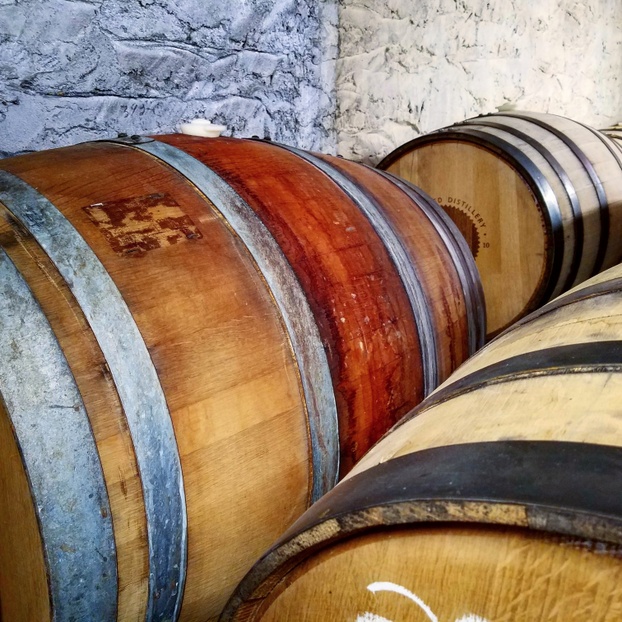
The port wine barrel is unique looking as well. Like most wine casks, it is slightly larger (59-60 gallon) than your typical bourbon (53-gallon) barrel. Stained red from use, it betrays the fruit contributions within. The fruity flavor brings out a new side to our imperial stout, making the beer taste like chocolate covered cherries. If I had to pick three words to describe this one, they’d be “aromatic,” “smooth” and “rich.”
Sherry barrels
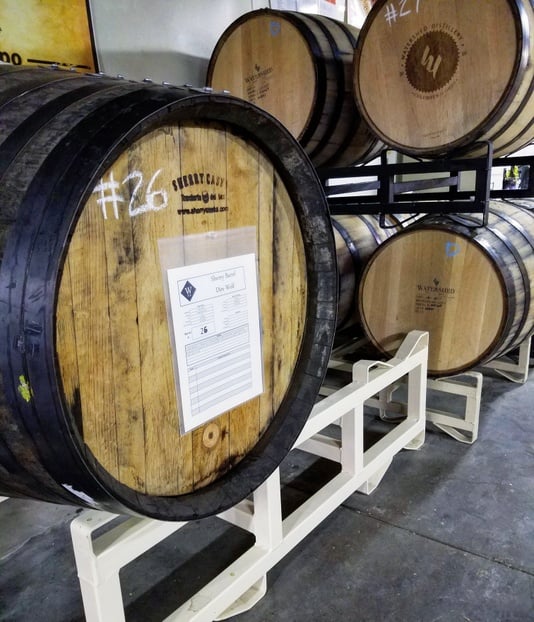
The sherry barrel is easily the most impressive member of our cellar. At nearly the volume of three bourbon barrels, it dwarfs the next largest vessel. In fact, one friend has dubbed it “The Rhinoceros.” It has also become a favorite photo-op on brewery tours.
I’ve found the Sherry Barrel Aged Dire Wolf to be the most unique wood-aged beer I’ve done to date. Vinous almost to an extreme. I had assumed we’d need to age the beer much longer in the sherry barrel than the bourbon or rum barrels due to how much less surface area the larger vessel offered. I was wrong: It picked up an amazing amount of flavor over the last six months. Grape skins, robust earthiness and a surprisingly intense oakiness pervades. The other barrels are all fun and delicious in their own ways, but this is a beer that is going to turn heads. It’s just so different than anything we’ve offered before.
In conclusion…
One final tip before you get started barrel aging: Look local. Though it may be counter-intuitive to many, I’ve learned that bourbon barrels need not be sourced from some aged rickhouse of lore to give off that classic barrel character. The vast majority of bourbon barrels I’ve used have come from Columbus local Watershed Distillery. The company and barrels may be younger than the big guys down in Kentucky, but Watershed Bourbon is a tasty, award-winning whiskey. I’ve been lucky to extract amazingly complex and complementary flavors from their oak in my cellar. The additional upsides are cheap local availability with next to zero carbon footprint, no shipping costs and a strengthened relationship with another local craft business.
If you seek to use local barrels, taste the spirit first and ensure there’s quality going into (or rather coming out of) that barrel. If you respect the product, both businesses can benefit. I’ve even been able to hold back bottles of bourbon filled off the exact barrels I put beer into, and then serve the two side by side at the release the next year. How fun is that?
To the other craft breweries reading: Experiment, have fun, but carefully consider the character of both the beer and the exotic barrels, and you’ll be rewarded with a unique offshoot of the typical bourbon barrel-aged offering.
This awesome feature was provided by Chris Davison, head brewer at Wolf’s Ridge Brewing located in Columbus, Ohio. Davison has written other great stuff for Craft Brewing Business, such as: Experiment: How will a coffee bean’s grind affect its flavor in your beer?

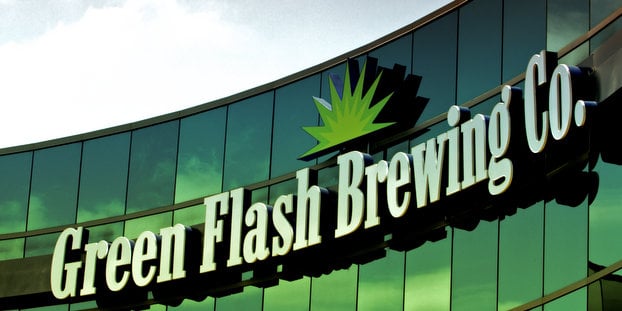
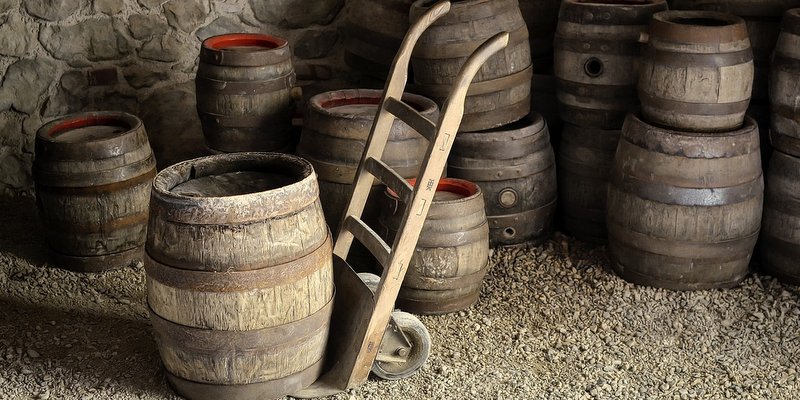
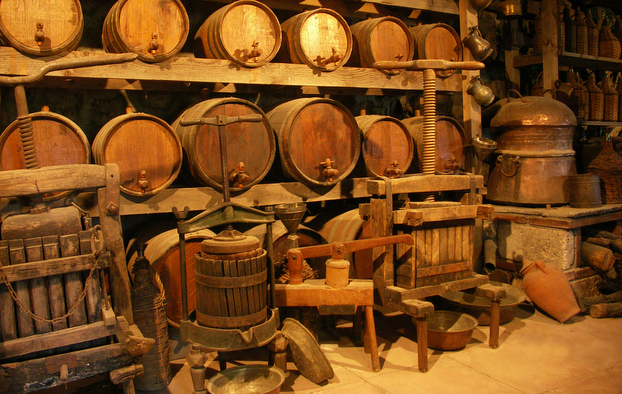
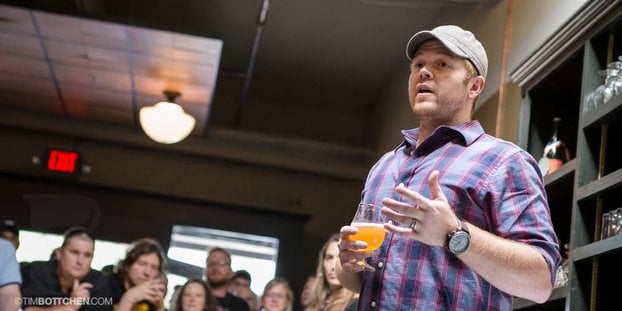
[…] barrel aging becomes more commonly used, brewers are experimenting with how different barrel-types affect the final brew flavor. For instance, a sherry wine barrel may result in a smoother, richer […]